Artemisia annua – an antimalarial miracle?
Antony Ellman
17 April 2014
/
- 0 Comments
The malaria problem
In the mid 1990s my late wife Ruth (a medical doctor and epidemiologist specializing in malaria control) and I (an agricultural planner and manager specializing in small farmer development schemes), both of us old friends of Mokoro, were working in Tanzania in the East Usambara Mountains. Despite the widespread use of preventive measures in the area (insecticide-treated bednets, indoor residual spraying, prophylactic drugs among the wealthy), multi-drug resistant malaria was a growing problem in Tanzania and throughout East Africa and South-East Asia. Malaria cases were creeping up the mountain to higher altitudes as the effects of climate change began to be felt.
Chloroquine, Fansidar and other treatments for severe Falciparum malaria were becoming useless as resistant strains of the parasite evolved, so the hunt was on for an effective and affordable alternative. The answer was found in a class of antimalarial drugs based on artemisinin, extracted from leaves of the annual shrub Artemisia annua. This plant originates in China where its effectiveness against “hot and cold fever” and other ailments has been known for over 2000 years. But the active ingredient, artemisinin, was identified by Chinese scientists only in 1972 and only in the current century have the drugs been produced and widely used against malaria outside China.
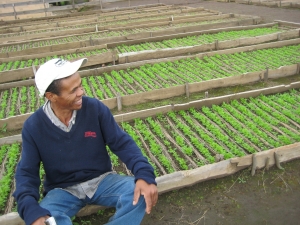
Figure 1. Artemisia seedlings in nursery, Antsirabe, Madagascar
In 1995 Ruth and I grew 100 Artemisia annua plants in our garden in East Usambara, with seeds obtained from a Swiss medicinal plants research institute called Mediplant. Ours were among the first Artemisia plants grown in Africa. They shot up from seedling stage to over 2 metres in less than three months. Since then I have learnt a lot about Artemisia, and have undertaken many consultancies for WHO, DFID, USAID, EU and MMV on its cultivation and use in Tanzania, Kenya, Madagascar, China, India and Vietnam. A lot of misinformation prevails about Artemisia and artemisinin. I will try to counter it in this piece.
Traditional and modern uses of Artemisia annua
In China Artemisia grows wild by the roadside and in barren spaces, mainly in the southern provinces of Hunan and Szechuan. Traditionally the leaves were used to make a herbal infusion – a recipe for this was found in a tomb in South China dated to 168BC. A handful of dried leaves was steeped in hot water and the resulting tea was claimed to be effective against a range of fevers and other diseases including malaria. Everyone, myself included, thought it would be ideal if Artemisia could be used in this way in Africa. Farmers would plant a few bushes in their back yards and pick the leaves when anyone fell ill with malaria – a home grown treatment for a home grown disease!
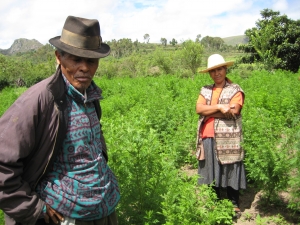
Figure 2. Artemisia in smallholder farm , Fianarantsoa, Madagascar.
Unfortunately it is not that simple. First artemisinin is poorly soluble in water: a sample of the leaves we grew in Tanzania, tested by the London School of Hygiene and Tropical Medicine, revealed that some 7 litres of an acrid tasting liquid would have to be consumed each day to obtain the required dose of artemisinin. Secondly the artemisinin content of the leaves varies greatly from plant to plant, so there is no way of knowing precisely what dose is being taken. Thirdly, while the tea may have a limited effect in reducing malaria symptoms it does not clear the parasites, and furthermore is effective only against uncomplicated malaria, not against severe malaria (which is rarely seen in China).
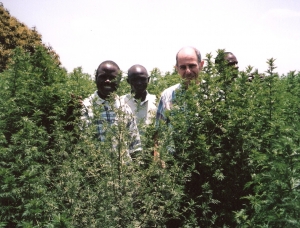
Figure 3. Mature Artemisia plants, Arusha, Tanzania.
Despite this knowledge, and based perhaps more on wishful thinking than scientific understanding, some NGOs in Africa still promote the use of Artemisia leaves as tea or lozenges, irresponsibly claiming that those who oppose this trend must be in the pocket of the multinational pharmaceutical industry! In remote parts of Africa with no access to modern medical services, using Artemisia as a tea may perhaps have some value in keeping patients alive until they can reach a medical centre. But the traditional use of the leaves is no substitute for reliance on manufactured artemisinin drugs, which are now the accepted front line treatment for severe malaria in East Africa and South-East Asia where they have saved many thousands of lives.
On the other hand solvent extraction of artemisinin using hexane, toluene or other industrial solvents can recover over 80% of the chemical in the leaves. This extract then forms the basis of scientifically formulated malaria treatments (pills, injections and suppositories). Despite the high costs involved, this is the way the drugs are now used in China as well as in malaria endemic parts of the world.
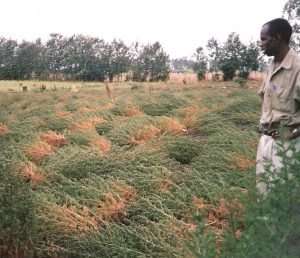
Figure 4. Harvested plants ready for threshing, Thika, Kenya.
Cultivation of Artemisia annua
The wild Artemisia varieties found in China (which still contribute some 30% of Chinese artemisinin) produce very low yields both of leaf and of artemisinin – less than 1 tonne per ha (tph) of dry leaf with about 0.3% artemisinin content. But hybrid varieties and selected cultivars developed at Mediplant and other centres, intensively cultivated, can produce ten or more times these yields: 2–3 tph leaf with 1.0–1.5% artemisinin are common.
The plant grows best in temperate or sub-tropical zones at 1,000–1,500 metres altitude, for example on the lower slopes of Mount Kilimanjaro or Mount Kenya. But it is highly adaptable: in Vietnam it grows around Hanoi at 50–100 metres, and plants can be seen in Antananarivo, Hampshire and even in the botanical garden of Padua!
The Artemisia seed is tiny (13,000 seeds per gramme) and the improved varieties are costly (£30–£50/g though only 3g are needed for planting 1 hectare), so it is best geminated in a nursery and transplanted when the seedlings are 8–12 cms high (Fig 1).
The young seedlings are vulnerable to water stress so reliable rainfall or irrigation is required. In Madagascar farmers commonly plant Artemisia in paddy fields after harvesting their rice: the crop uses the residual moisture in the soil (Fig 2). Once established Artemisia is resilient with few natural enemies. In good conditions it grows to a height of over 2 metres in a 5–7 month growing season (Fig 3). It is harvested by cutting the whole plant, drying in the field, and threshing to separate the leaves from the stems (Fig 4). The dried leaves are then transported to a factory in sacks for extraction.
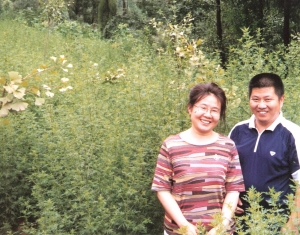
Figure 5. Artemisia interplanted with Ginkgo biloba, Szechuan, China.
An ideal crop for small farmers
Artemisia cultivation is a labour-intensive activity, especially at transplanting, harvesting and threshing stages. It requires few purchased inputs other than seed, ties up the land for only a single season, is not susceptible to disease or theft, and has a guaranteed market in the processing factory. From all these viewpoints it is an ideal crop for smallholder production – a low risk enterprise which can make a valuable contribution to household incomes.
Some 20,000 to 30,000 ha of Artemisia were planted worldwide in 2013, at least 80% of it by smallholders. Approximately 50% of this area is in China, 20% in East Africa, 15% in Vietnam and 10% in Madagascar. In East Africa and Madagascar the average plot size is less than 0.5ha. In China plots are even smaller: farmers commonly interplant Artemisia with other medicinal plants such as Ginkgo (Fig 5) or in alternate rows with food crops such as maize, soya, groundnuts or sweet potato (Fig 6).
Most of the extracting companies supply improved seed or seedlings, technical advice and training to the farmers from whom they will buy the leaf. In East Africa and Madagascar the companies sign an agreement with the farmers setting out the services that the company will provide, the commitment the farmers will make to grow and sell their leaf to the company, and the conditions for leaf purchase including quality standards and price. In China and Vietnam the market is less regulated. In all cases the leaf price obviously must make Artemisia cultivation competitive with other cash crops. In many cases it has been linked directly to the end price of artemisinin, making this a rare example of fair trade practice in a new enterprise.
Extraction and manufacture of artemisinin drugs
Currently only ten factories worldwide have the capacity to extract 20 tonnes of artemisinin or more per year. Eight are in China, one in Kenya and one in Madagascar. There are also smaller factories in China and Vietnam manufacturing 5–10 tonnes of artemisinin per year, but these do not meet WHO’s GMP (Good Manufacturing Practice) standards. Most of the factories spread their risks by processing other medicinal plants in addition to Artemisia.
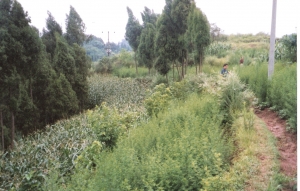
Figure 6. Artemisia and maize row planted, Szechuan, China.
The extractors export crude artemisinin to pharmaceutical companies in India, China, France and Switzerland for purification and manufacture of the final products. The Kenya and Madagascar companies plan to add value by local purification and derivitisation (derivatives of artemisinin are more effective against malaria than artemisinin itself), but it will take some time before they meet WHO quality standards.
Artemisinin-based drugs normally clear around 95% of malaria parasites in a three-day course of treatment. To reduce the risk of resistance and to extend the useful life of artemisinin drugs (especially important since there are currently no other effective antimalarials in the pipeline), WHO insists that they are used not on their own as monotherapy, but in combination with another antibiotic which will mop up the escaping 5% of parasites (as Artemisinin Combination Therapy or ACT). The rigorous quality standards required explain why ACTs are currently made only in a few WHO-approved factories in China, India, France and Switzerland.
Supply and Demand for ACTs
WHO estimates the global demand for ACTs to be around 300 million treatment courses per year. This requires approximately 180 tonnes of artemisinin which, with good agricultural and extraction practices, can be produced from 30,000 ha of Artemisia. Currently each ACT course costs about US$2: at this level an acceptable price can be paid to farmers for their leaf and to extractors for their artemisinin. But it is unaffordable by the 81 African and SE Asian governments who are the main users of the drugs.
Since ACTs were first launched, the costs have been heavily subsidized by the Gates Foundation and other donors through the Global Fund for AIDS, TB and Malaria. The Global Fund buys 90% of the ACTs produced, and supplies them free to Governments which then distribute them through both public and private sector channels. The extent to which supply of ACTs has met demand has therefore been determined largely by the funding available from donors to the Global Fund.
This funding has risen exponentially since 2002, but unfortunately each year’s replenishment has been last minute and very uncertain. Extractors have been unclear how much artemisinin they can sell and at what price: hence they have been reluctant to expand their factories and contract more growers. Farmers have been equally reluctant to commit themselves fully to Artemisia cultivation: they plant a lot when the price is high and neglect the crop when the price is low.
So there has been an unhappy boom and bust sequence in the supply chain, which has been further compounded by the recent appearance (in 2012) of a semi-synthetic form of artemisinin, developed with Gates Foundation funding at the University of California and likely in due course to be produced commercially by a French pharmaceutical corporation. Currently the price of semi-synthetic artemisinin is higher than that of plant-derived artemisinin and its performance is not yet proven, but the future trends are uncertain.
Since 2005 WHO with other agencies has arranged an annual artemisinin conference, bringing together growers, extractors, manufacturers, distributors, researchers, funders and users of the drugs in an attempt to bring reason and stability to the supply chain. An International Artemisinin Association is being formed to maintain the momentum. I have been lucky enough to attend all these conferences: they have been quite effective but risks to future ACT supply still remain.
Future risks and hopes
ACTs still represent the best hope for controlling multi-drug resistant malaria, alongside treated bednets, spraying, prophylactic drugs and the ongoing but elusive search for an effective malaria vaccine. Three major risks to the future of the enterprise remain.
First instability in the supply chain: uncertainty in demand and price discourages growers, extractors and manufacturers. Second the possible competition to plant-based artemisinin production from a semi-synthetic substitute. Third the appearance of malaria parasites resistant to ACT treatment, already seen in a small way on the Thai-Cambodia and Thai-Burma borders.
Instability in the supply chain is being addressed through the annual conferences and the Artemisinin Association. The viability of semi-synthetic artemisinin is still some way off. Resistance to artemisinin drugs is already upon us, accelerated by use of counterfeit and substandard drugs and monotherapies, but serious efforts are being made to contain the spread. Most experts predict that ACTs still have a good 10 years of useful life.
The journey from excavation of a 2000 year old recipe for Artemisia tea in a Chinese tomb, via the first improved Artemisia plants grown in Tanzania in 1995, to today’s situation where some 100,000 small farmers around the world earn good incomes from Artemisia cultivation and some 300 million doses of ACT are made and administered annually, is a long and challenging one. It has been exciting to be part of it. The journey still has some way to run.
You must be logged in to post a comment.
